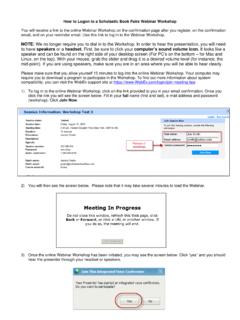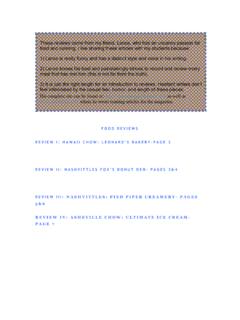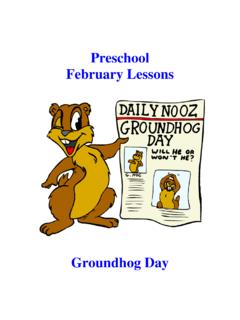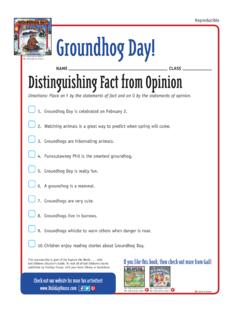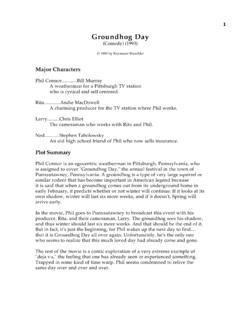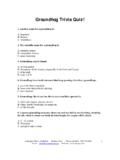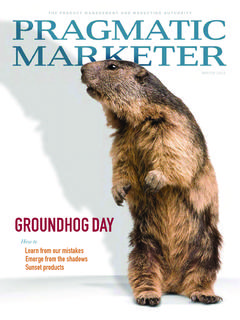Transcription of Groundhog Day - Scholastic
1 63 Holiday HistorySince ancient Rome, Candlemas Day on February 2 was designated to predict the coming of spring. People believed that If Candlemas Day is fair and clear, there ll be two winters in the year meaning it would staycolder for much longer that year. In Germany, Austria, and countries acrossnorthern Europe, people watched to see if hibernating animals came out oftheir nests. This tradition came to America with European colonists. The German colonists in Pennsylvania watched the Groundhog because it is one of the more common hibernating animals there. Fast FactOn February 2, it is said that the Groundhog comes out of its hole after hibernating all winter to see if springis approaching. The theory is that if it sees its shadow, which means the sun is shining, there are six weeksleft of winter. The Groundhog returns to its hole. If it s cloudy or rainy, there is no shadow.
2 The groundhogtakes this as a sign of the approach of spring and doesn t return to its hole. America CelebratesThe Groundhog Punxsutawney Phil from Punxsutawney, Pennsylvania, is the official Groundhog ofGroundhog Day. People from all over the country wait each year to see if he sees his shadow. The Groundhog s ShadowTeach students about shadows. Ask students to choose their own groundhogs (a stuffed animal from homeor any school object). Find a sunny area on concrete or the ground where shadows will appear. Explain thata shadow is formed when an opaque object something that s not clear blocks light. (If a student is havingtrouble seeing the shadow for his or her object, choose a tall stationary object such as a tree or flagpole.) In the morning, the sun is in the east, so the shadow should be on the west side of the groundhogs. Havestudents observe the direction and length of the shadow throughout the day.
3 In the middle of the day (beforelunch), the sun is highest in the sky so the shadow should be shortest. Late in the day, the shadow should beto the east of the Groundhog since the sun sets in the students draw pictures of their groundhogs for the bulletin board. Have them chart their shadow activity findings at various times of the day. Chart categories can include: time, location,shadow s height, width, and direction (north, south, east, west). Students can make their own compasses on a piece of paper, which they can adjust to show whichdirection they are facing and set on the ground for reference. Help them use the position of the sunto orient themselves. Keep an actual compass on hand to check for accuracy. Also, bring out rulers,yard sticks, or measuring tape to measure and record the length of the shadows. Select a sunnyday which might not be February 2! to assure a successful this quirky holiday, the Groundhog is our gauge to tell us if spring is nearly here.
4 Studentswill love the mascot, and you can weave in a quick lesson about weather and tradition. Web LinkCheck out lots of fun Groundhog lorefrom the PunxsutawneyGroundhog Club. Students cansee Phil s predictions datingback to 1887! Groundhog DayFebruary 2 United States and CanadaTIPB ulletinBoardIdeaThe Scholastic Big Book of Holidays Around the Year Susan Dillon, published by Scholastic Teaching Resources
